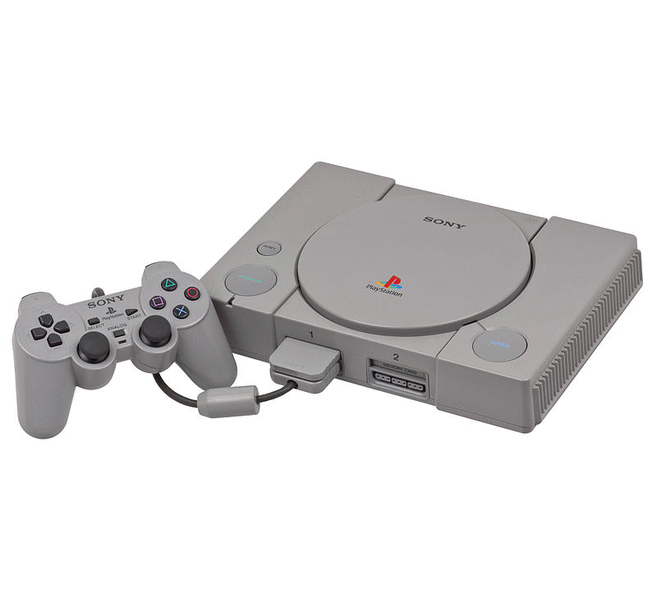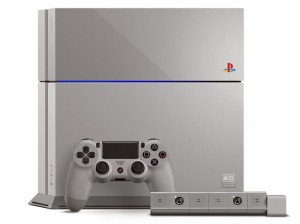 Sony made a debut with home gaming console back in 1995 which took the gaming industry by storm, which was a revolutionary move for other consoles to follow in its footsteps. Sony recently celebrated the twentieth anniversary of its famous console PlayStation with an announcement of releasing a special Anniversary edition of PS4 which looks similar to the first PlayStation with original colour grey. The colour is not only limited to the console but also extends to the dual shock controller, camera and the stand.
Sony made a debut with home gaming console back in 1995 which took the gaming industry by storm, which was a revolutionary move for other consoles to follow in its footsteps. Sony recently celebrated the twentieth anniversary of its famous console PlayStation with an announcement of releasing a special Anniversary edition of PS4 which looks similar to the first PlayStation with original colour grey. The colour is not only limited to the console but also extends to the dual shock controller, camera and the stand.
Playstation or PSone as it was fondly called was instrumental in changing the course of how you played games within the comforts of your homes. The never seen before graphics and engrossing gameplay were some of its features that were a first in the console gaming era, which was then dominated by Nintendo.
Nintendo was producing games on the 16-bit cartridges, whereas Sony opted for the cheap to produce CD-ROMS which could store more data on it. The developers and gamers equally were lured by the 32-bit machines which were more powerful and convenient.
The success of the console was so vast that it sold 102 million units over the course of its lifespan. Titles like Tomb Raider, Grand Turismo were one of few driving factors of sales, (with the former being one of the most sold titles in the history of the console’s life) and community of loyal fans across the globe.
The controller was another factor which made a big difference how people play games nowadays. With the dual thumbstick joysticks, PlayStation ushered in the era of force feedback – a mainstay for consoles – with the DualShock controller. The DualShock went on to become the standard pad for all of Sony’s consoles (with the motors built in), and had its most radical refresh with the DualShock 4 for PS4.
With the PlayStation 1 on read only mode on CD-ROMs meant that you could no longer save your game, and as a result, you needed a memory card. The PS1 helped popularise it as something you could take around to your mate’s place and continue where you left off – no more inputting codes or unlocking extra characters in a single playthrough again!
Sony was responsible for vertically stacked consoles and with a smaller footprint you could practically put the console anywhere without worrying about the space. Microsoft too followed suit with its Xbox 360 and since then the consoles have been that way.
In March 2000, PlayStation 2 burst onto the scene, leveraging the mega-capacity of DVDs before the format was standard storage. The company shipped around 150 million units worldwide, and the PS2 remains the best-selling console of all time.
In 2006, Sony released the third version of its PlayStation titled PS3. The PS3 was originally offered with either a 20 GB or 60 GB hard drive, but over the years its capacity increased in increments available up to 500 GB. The PlayStation 3 has sold over 80 million consoles worldwide as of November 2013.
Last year, Sony released PS4, the eight generation system, introducing x86 architecture to the PlayStation series. The PlayStation 4 garnered great sales at the point of launch, with numbers surpassing 250,000 consoles within a 48-hour period and 530,000 in the first five weeks.
 The market is still competitive. Xbox One from Microsoft is in hot demand this holiday shopping season, giving the PlayStation 4 a run for its money, along with competing consoles from Nintendo, including the Wii U.
The market is still competitive. Xbox One from Microsoft is in hot demand this holiday shopping season, giving the PlayStation 4 a run for its money, along with competing consoles from Nintendo, including the Wii U.
Trying to gain an edge, Sony recently unveiled an internet cable service called Vue, which would be accessible through PlayStation consoles instead of a cable box.
Sony with its consoles has a roadmap to go on for the next 10 years and the company’s future in the gaming market seems to be extremely promising.

